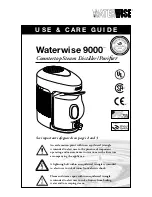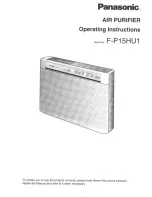
19
GB
[Fig. 11..] Combination of outdoor units and transmission booster unit
ME
IC
BC
M1M2 S
TB5
IC
M1M2 S
TB5
RP
Ground
A B
A B
A B
S
TB2
A B S
TB3
L
15
L
18
ME
IC
M1M2 S
TB5
IC
M1M2 S
TB5
L
17
L
16
L
14
L
13
M1M2 S
M1M2
TB3
M1M2
TB3
M1M2 S
TB7
M1M2 S
TB7
OC
(51)
L
11
L
12
OS
(52)
CN41
CN41
TB02
111
111
( ) Address
Daisy-chain terminals (TB3) on outdoor units in the same
refrigerant system together.
Leave the power jumper connector on CN41 as it is. When
connecting a system controller to the transmission line (TB7) for
centralized control, refer to [Fig. 11.3.1], [Fig. 11.3.2], or DATA
BOOK.
•
•
•
<Wiring Method and Address Settings>
a. Always use shielded wire when making connections between the outdoor unit (OC) and the indoor unit (IC), as well for all OC-OC, OC-OS and IC-IC wiring intervals.
b. Use feed wiring to connect terminals M1 and M2 and the ground terminal on the transmission line terminal block (TB3) of each outdoor unit (OC) to terminals M1,
M2 and terminal S on the transmission line block of the indoor unit (IC). For OC and OS, connect TB3 to TB3.
c. Connect terminals 1 (M1) and 2 (M2) on the transmission line terminal block of the indoor unit (IC) that has the most recent address within the same group to the
terminal block on the remote controller (RC).
d. Connect together terminals M1, M2 and terminal S on the terminal block for central control (TB7) for the outdoor unit in a different refrigerant system (OC). For OC
and OS in the same refrigerant system, connect TB7 to TB7.
e. When the power supply unit is not installed on the central control transmission line, change the jumper connector on the control board from CN41 to CN40 on only
one outdoor unit in the system.
f. Connect the terminal S on the terminal block for central control (TB7) for the outdoor unit (OC) for the unit into which the jumper connector was inserted into CN40 in
the step above to the ground terminal in the electrical component box.
g. Set the address setting switch as follows.
* To set the outdoor unit address to 100, the outdoor address setting switch must be set to 50.
Unit
Range
Setting Method
Indoor unit (Main)
01 to 50
Use the most recent address within the same group of indoor units. With an R2 system with sub BC
controllers, set the indoor unit address in the following order:
1
Indoor units connected to the main BC controller
2
Indoor units connected to BC sub controller 1
3
Indoor units connected to BC sub controller 2
Set the indoor unit addresses so that all the addresses of
1
are smaller than those of
2
, and that all
the addresses of
2
are smaller than those of
3
.
Indoor unit (Sub)
01 to 50
Use an address, other than that of the IC (Main) from among the units within the same group of indoor
units. This must be in sequence with the IC (Main)
Outdoor Unit (OC, OS)
51 to 100
Set the addresses of the outdoor units in the same refrigerant system in the order of sequential
number. OC and OS are automatically identified. (*1)
BC controller (Main)
51 to 100
Outdoor unit address plus 1. When the set indoor unit address duplicates the address of another
indoor unit, set the new address to a vacant address within the setting range.
BC controller (Sub)
51 to 100
Lowest address within the indoor units connected to the BC controller (sub) plus 50
M-NET R/C (Main)
101 to 150
Set at an IC (Main) address within the same group plus 100
M-NET R/C (Sub)
151 to 200
Set at an IC (Main) address within the same group plus 150
MA R/C
–
Unnecessary address setting (Necessary main/sub setting)
*1 OC and OS of the outdoor units in the same refrigerant system are automatically identified. They are identified as OC and OS in descending order of capacity (If the
capacity is the same, they are identified in the ascending order of their address number).
h. The group setting operations among the multiple indoor units is done by the remote controller (RC) after the electrical power has been turned on.
i. When the centralized remote controller is connected to the system, set centralized control switches (SW2-1) on control boards in all outdoor units (OC, OS) to “ON”.
<Permissible Lengths>
1
M-NET Remote controller [Fig. 11..1]
Max length via outdoor units: L
1
+L
2
+L
3
+L
4
and L
1
+L
2
+L
3
+L
5
and L
1
+L
2
+L
6
500 m [1,640 ft] (1.25 mm
2
[AWG 16] or more)
Max transmission cable length: L
1
and L
3
+L
4
and L
3
+L
5
and L
6
and L
2
+L
6
200 m [656 ft] (1.25 mm
2
[AWG 16] or more)
Remote controller cable length:
1
,
2
,
3
,
4
10 m [32 ft] (0.3 to 1.25 mm
2
[AWG 22 to 16])
If the length exceeds 10 m [32 ft], use a 1.25 mm
2
[AWG 16] shielded wire. The length of this section (L
8
) should be included in the
calculation of the maximum length and overall length.
2
MA Remote controller [Fig. 11..]
Max length via outdoor unit (M-NET cable): L
1
+L
2
+L
3
+L
4
and L
1
+L
2
+L
6
500 m [1,640 ft] (1.25 mm
2
[AWG 16] or more)
Max transmission cable length (M-NET cable): L
1
and L
3
+L
4
and L
6
and L
2
+L
6
200 m [656 ft] (1.25 mm
2
[AWG 16] or more)
Remote controller cable length:
m
1
+
m
2
and
m
1
+
m
2
+
m
3
+
m
4
200 m [656 ft] (0.3 to 1.25 mm
2
[AWG 22 to 16])
•
•
•
•
•
•
















































